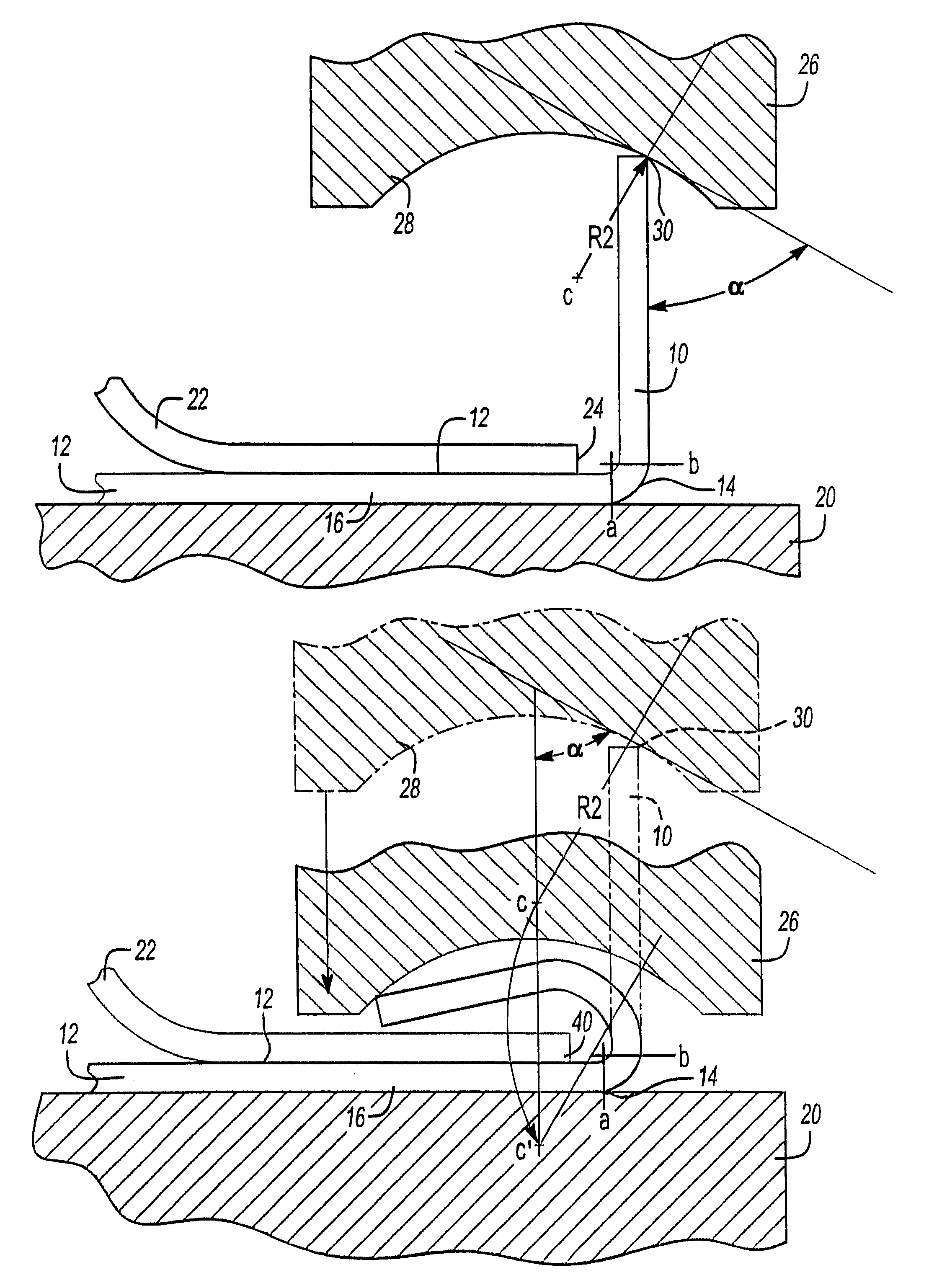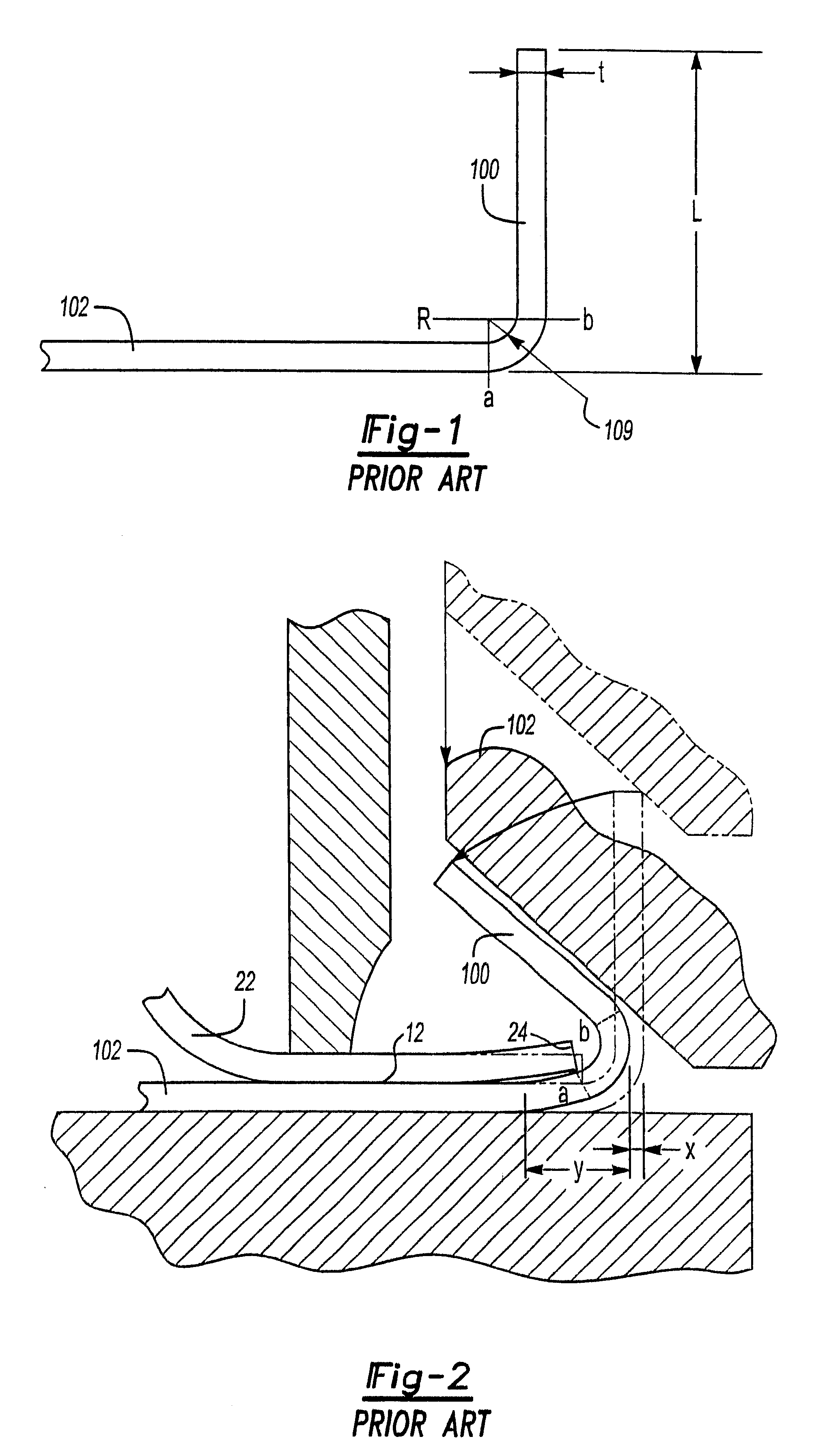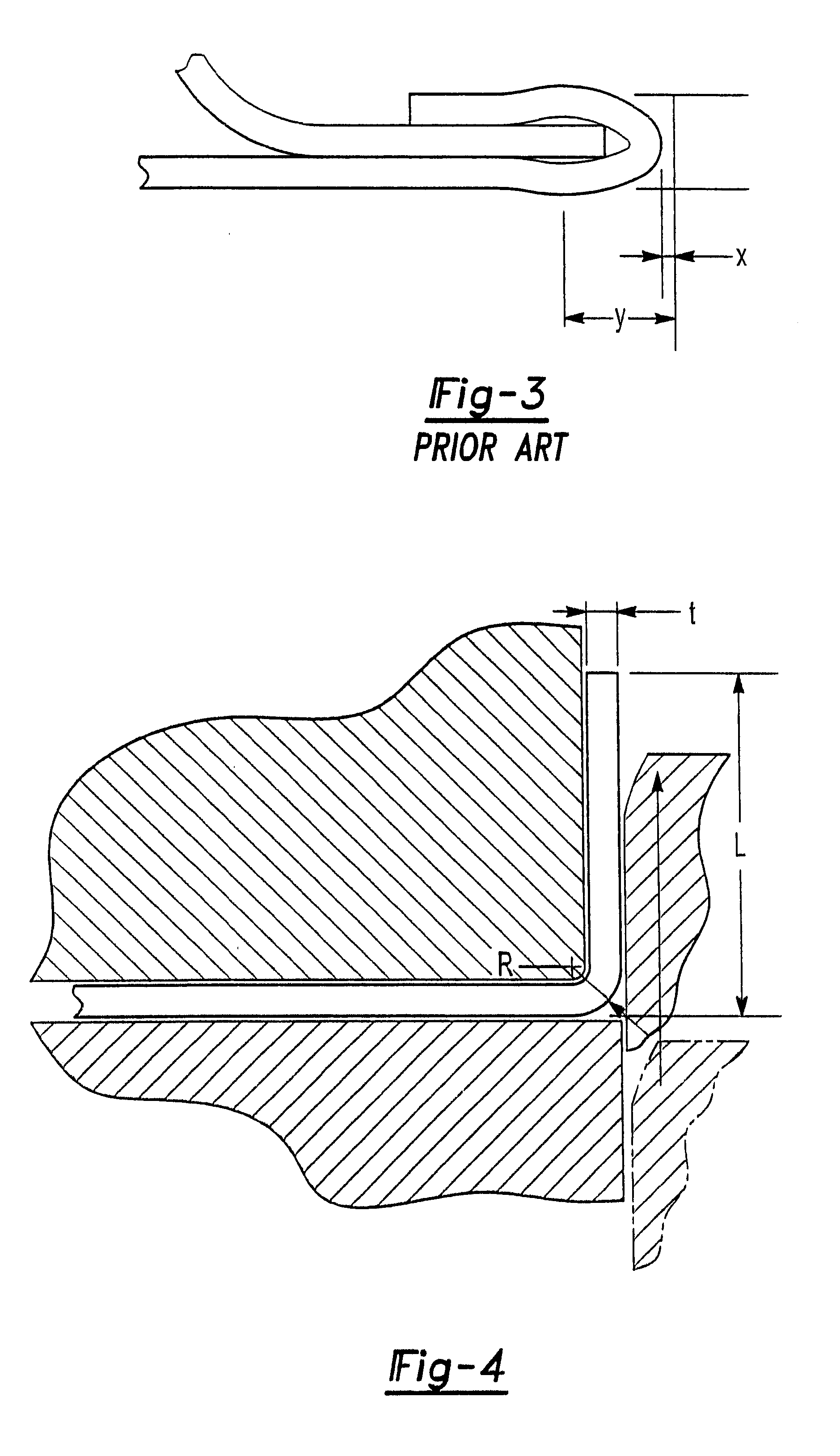Method for hemming
a hemmed part and hemmer technology, applied in metal-working equipment, metal working equipment, manufacturing tools, etc., can solve the problem that the location of the inner edge will fatally affect the final geometry of the hemmed part, and achieve the effect of obtaining the overall visual appearance of a very thin hem
- Summary
- Abstract
- Description
- Claims
- Application Information
AI Technical Summary
Benefits of technology
Problems solved by technology
Method used
Image
Examples
Embodiment Construction
With reference first to FIG. 4, during the hemming method of the present invention, a flange 10 is first formed around an outer peripheral portion of an outer panel 12. Consequently, the flange 10 extends from a bend line 14 formed in the outer panel 12 such that the flange 10 lies in a plane generally perpendicular to the plane of the remainder 16 of the outer panel 12. The flange 10, furthermore, has an overall width of L.
Unlike the previously known hemming methods, the bend line 14 has an outer radius R in the range of (1.0 mm+t)>R>(0.2 mm+t) where t=the thickness of the outer body panel 12. Since aluminum panels 12 are generally from 0.8 mm to 1.2 mm in thickness, the radius R between the flange 10 and remainder 16 of the outer panel 12 along the bend line 14 will be typically in the range of 1.4 mm to 2.2 mm for a 1.2 mm thick panel.
With reference now to FIGS. 5A and 5B, following the flanging operation, the outer panel 12 is positioned on a nest 20 (illustrated only diagrammat...
PUM
| Property | Measurement | Unit |
|---|---|---|
| angle | aaaaa | aaaaa |
| angle | aaaaa | aaaaa |
| width | aaaaa | aaaaa |
Abstract
Description
Claims
Application Information
 Login to View More
Login to View More - R&D
- Intellectual Property
- Life Sciences
- Materials
- Tech Scout
- Unparalleled Data Quality
- Higher Quality Content
- 60% Fewer Hallucinations
Browse by: Latest US Patents, China's latest patents, Technical Efficacy Thesaurus, Application Domain, Technology Topic, Popular Technical Reports.
© 2025 PatSnap. All rights reserved.Legal|Privacy policy|Modern Slavery Act Transparency Statement|Sitemap|About US| Contact US: help@patsnap.com



